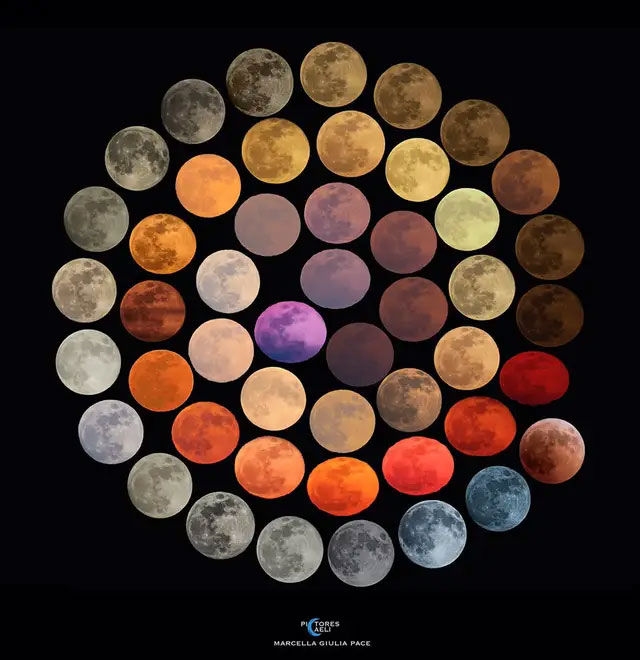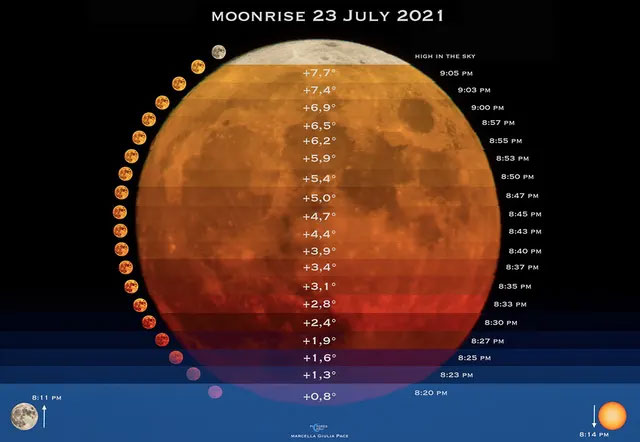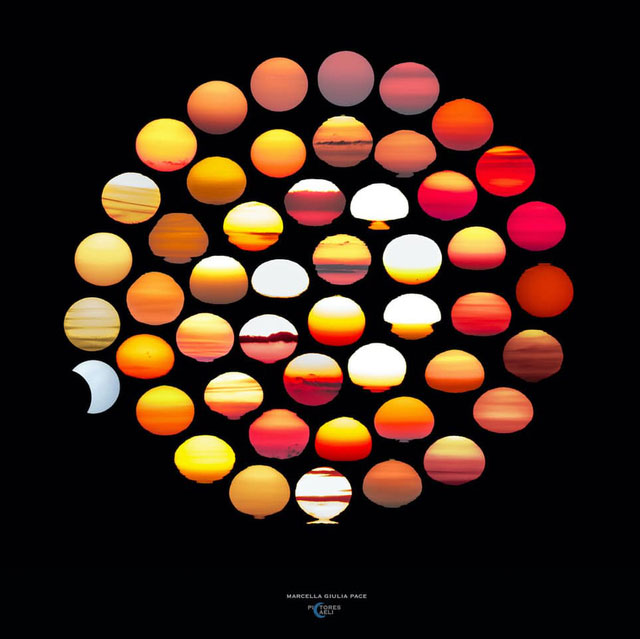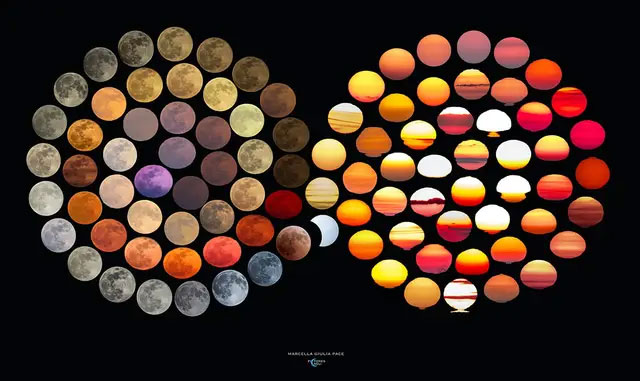Italian elementary school teacher Marcella Pace has always had a passion for astronomy. This passion led her to pursue astrophotography. Over the years, her works have been selected by NASA as Astronomy Picture of the Day and have been nominated for the Astronomy Photographer of the Year awards.
In particular, her image of the Moon showcasing 48 different colors has garnered significant attention. This piece took a decade to create and is truly a sight to behold.

Outside Earth’s atmosphere, the dark Moon illuminated by reflected sunlight appears a beautiful gray-brown hue. However, when viewed from within Earth’s atmosphere, the Moon can display a range of colors. The red or yellow hues often occur when the Moon is seen near the horizon, where some blue light is scattered along a long path through Earth’s atmosphere, sometimes filled with fine dust. The rare blue Moon may indicate that it is viewed through the atmosphere carrying larger dust particles. The cause of the Moon’s purple color remains unclear—possibly a combination of various optical effects.
“During the pandemic, I spent a lot of time at home, so I had the opportunity to revisit my old images,” Pace told My Modern Met. “Looking back at my photos, I decided to select all the Moon images I had captured since I started using a digital camera. I chose the 48 most beautiful colors of the Moon and compiled them, taken when the Moon was rising or setting, or when atmospheric scattering created interesting colors.”
Thus, the final piece is the “culmination” of over 10 years of her photography.
After being chosen as NASA’s Astronomy Picture of the Day in November 2020, it continued to spread across the internet. “There’s something captivating about the photo, and I receive daily compliments about it from all over the world,” Pace said.

The Moon reflects light from the Sun—it does not actually generate any light of its own. The perceived brightness of the Moon depends on its position in orbit around Earth. The color of the Moon can change from red and purple to white or yellow. However, this is due to optical phenomena in our atmosphere, not caused by the Moon itself. In other words, it’s merely an apparent color; the actual color does not depend on optical incidents.

Marcella Pace also created a similar photo of the Sun. “The entire Sun, including all its internal layers, emits light. ‘The color of the Sun’ is the spectrum of colors present in sunlight, arising from the complex interactions of all the components of the Sun,” said Christopher Baird, an associate professor of physics at West Texas A&M University in Canyon, Texas.



















































